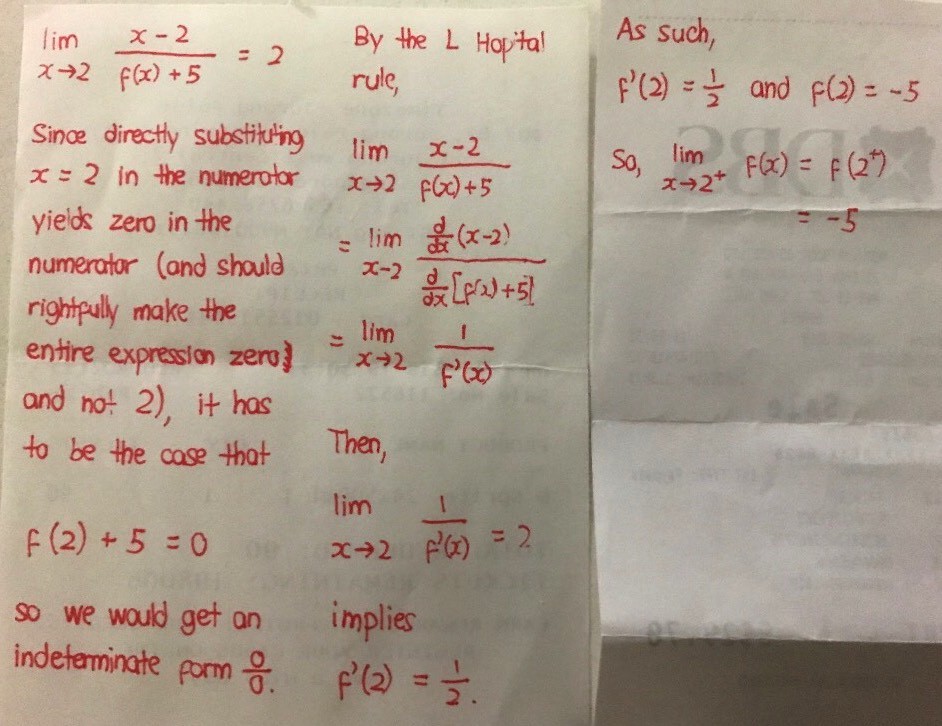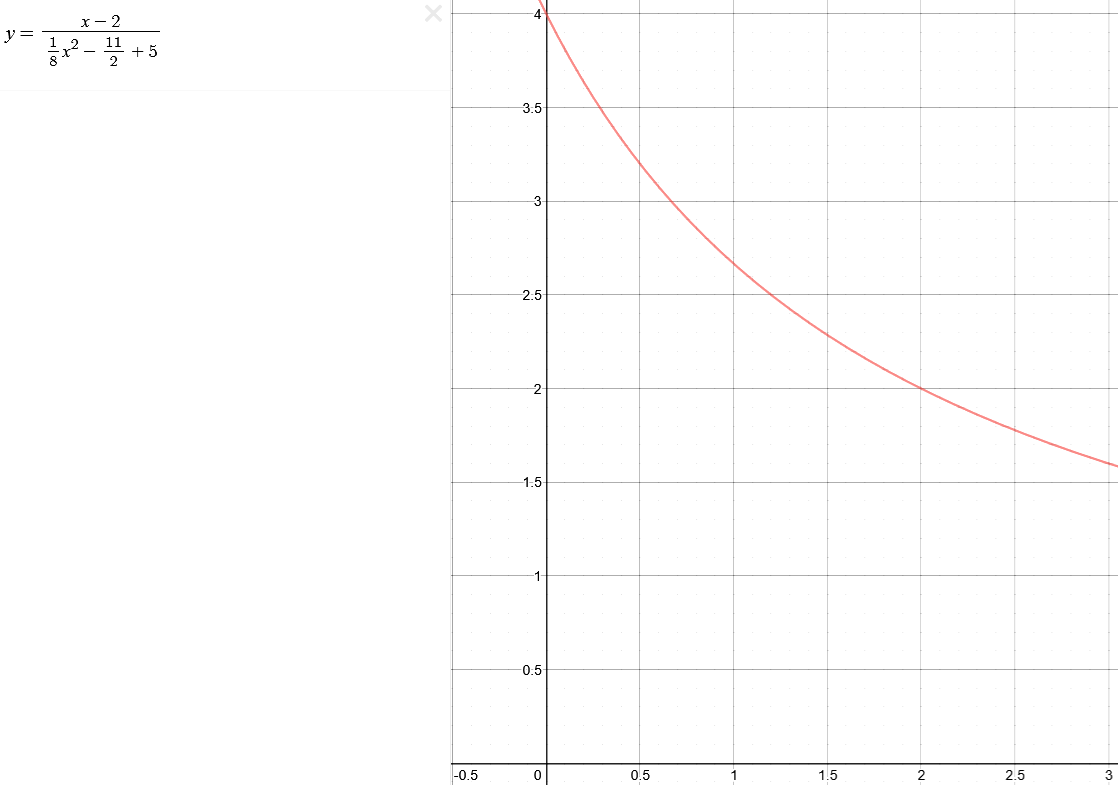Ask Singapore Homework?
Upload a photo of a Singapore homework and someone will email you the solution for free.

Question
junior college 2 | H3 Maths
2 Answers Below
Anyone can contribute an answer, even non-tutors.

pls help!
Then lim [ (x - 2) / (f(x) + 5) ] lim (f(x) + 5)
= 2 lim (f(x) + 5)
lim [ (x - 2) / (f(x) + 5) x (f(x) + 5) ] = 2 lim f(x) + 2 lim (5)
lim (x - 2) = 2 lim f(x) + 2(5)
2 lim f(x) = -10
lim f(x) = -5
See 2 Answers
The numerator is technically zero after substitution by x = 2, and in normal circumstances this should make the entire expression become 0 and not 2. The fact that the expression becomes 2 means that there must be something going on in the denominator, and we discover that the denominator has to also be zero.
This indeterminate form 0/0 is the only way we can further inspect the expression to see why the expression can have 2 as a limit.
In the following steps I attempted the usage of the L Hopital rule to see that the numerator goes to a fixed number 1 and the denominator goes to a simple expression f’(x), and the fact that a limit of 2 exists when x = 2 does exist suggests that f’(2) = 2. These steps are just to ensure that the limit does exist.
I am not sure how the actual expression f(x) could go like. Perhaps something like f(x) = 0.125x^2 - 5.5 based on the results. But it does not matter for this question.






